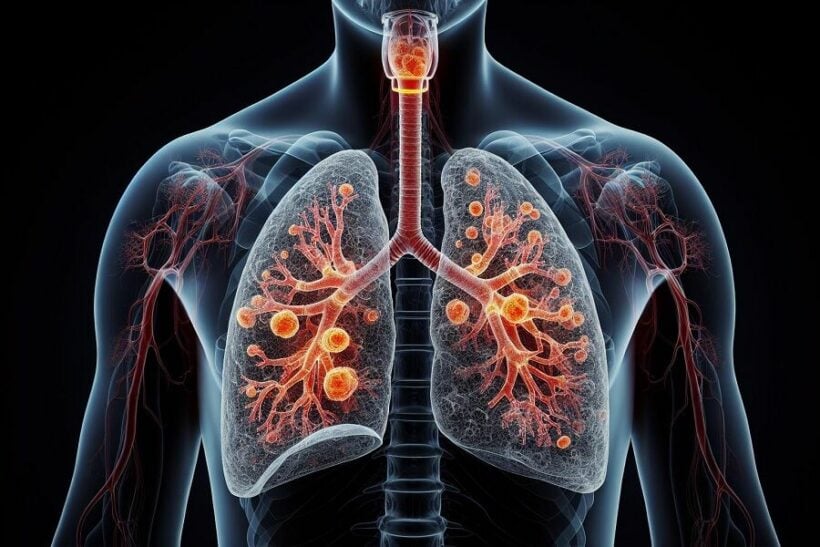Invisible invaders: How PM2.5 particles harm your health

This health hazard is called PM 2.5, a term used to describe particulate matter smaller than 2.5 microns. To put it in perspective, it’s 20 times smaller than a strand of your hair. These fine inhalable particles are more than just dust, they’re tiny invaders that can penetrate deep into our bodies, causing a range of health issues.
What is particulate matter?
Particulate matter, or PM, is notoriously known as the silent poison prevailing in the environment. PM 2.5 specifically refers to particulate matter smaller than 2.5 microns, capable of infiltrating the protective layers of your skin, penetrating deep into your bodily systems where it can wreak havoc.
Health effects of PM2.5
Respiratory system
The constant inhalation of these minute particles less than 2.5 micrometres in diameter agitates the respiratory system starting from the upper segments. As you breathe in these pollutants, nasal allergic reactions, sneezing, nasal mucus, and blocked nose are the immediate side effects. This inflammation often deteriorates over time, spreading to the lower respiratory tract, including the trachea and the alveoli, escalating to conditions like sinusitis and asthma.

Cardiovascular system
PM2.5 doesn’t stop at the respiratory system. Its reach extends to inducing several cardiovascular conditions. The risk it poses to heart health is significant, linking it with an increased likelihood of heart attacks, strokes, arrhythmias, and heart disease.
The fine particles in the PM2.5 can cause inflammation and oxidative stress in the cardiovascular system. In response to this unchecked inflammation, your body reacts by accelerating arterial plaque formation, potentially leading to a broad range of cardiovascular issues.
Nervous system
While the impact of PM2.5 on your nervous system is not as immediately apparent as its influence on respiratory and cardiovascular health, the long-term possibilities are quite worrisome. The small size of PM2.5 particles allows them to bypass the body’s initial defences, infiltrating deeper into your system and potentially interacting with your nervous system. Research is still underway to fully understand these implications, but the invasive nature of such fine particles leaves plenty of room for concern.
By establishing a deeper understanding of these health effects, revising health strategies and adopting preventive measures, we can better safeguard against the health detriments posed by PM2.5.
Vulnerable populations
Children
Children are highly susceptible to the health risks posed by PM2.5. Their lungs are still developing, and because they breathe more air relative to their size than adults, are at an increased risk. Long-term exposure to PM2.5 impairs the lungs’ growth and function, as noted in the CARB-initiated Children’s Health Study. The same study discovered that kids living in communities with high levels of PM2.5 had slower lung growth and smaller lungs at the age of 18 compared to children living in areas with low PM2.5 levels.
Moreover, children are likely to spend more time outdoors, further increasing their exposure to PM2.5.
Older
The Older constitutes another population vulnerable to the ill effects of PM2.5. Health issues increase with age, particularly cardiovascular and respiratory diseases, making this group particularly at risk. Complications due to PM2.5 can exacerbate preexisting conditions in Older individuals. For instance, they can suffer from unusual chest pain, palpitations, or shortness of breath when PM2.5 levels are high. Many studies have found a strong correlation between increased PM2.5 levels and premature mortality, notably, among the Older.
Pregnant women
Lastly, pregnant women are another group to watch. During pregnancy, there’s a heightened sensitivity to potential health threats, including PM2.5. Expectant women exposed to high concentrations of PM2.5 risk having babies with lower birth weights and premature births.

Mitigating the effects of PM2.5 involves constant vigilance. Monitor air quality indexes, reduce exposure on days with high pollution levels, use air purifiers indoors, wear masks designed to filter out fine particles (N95), and limit outdoor activities. As each individual’s health situation can be different, personal discretion and measures are key in combatting the health effects of PM2.5.
Long-term exposure risks
Lung diseases
Your lungs are your body’s defence system against airborne contaminants. If you’re continually inhaling particles where PM2.5 is high, it becomes a battleground for your respiratory system. For children who play outdoors and adolescents whose lungs are still in the development stage, PM2.5 exposure proves particularly hazardous.
The risks don’t stop there. Long-term exposure to PM2.5 can be a contributing factor to lung cancer. Numerous studies point to its link to this deadly disease. Keep in mind; that knowledge is power. By monitoring PM2.5 levels in your local environment and avoiding times of high pollution, you’re improving the odds of better lung health.
Heart diseases
Exposure to PM2.5, fine particles less than 2.5 micrometres in size, can increase heart disease risk. These particles infiltrate the lungs and potentially enter the bloodstream, harming both respiratory and cardiovascular health.
People with pre-existing heart issues, lung problems, or weakened immunity are especially vulnerable. Exposure can trigger heart attacks, irregular heartbeat, and worsen asthma.
To minimize risk:
- Monitor air quality reports.
- Limit outdoor activity during peak pollution times.
- Consider N95 masks and air purifiers for additional protection.
Taking action to reduce PM2.5 exposure can significantly benefit your heart health.
Ways to protect yourself
Use air purifiers
Air purifiers are a great weapon to combat indoor pollution. They’re capable of trapping a high percentage of the pesky PM2.5 particles that’ve snuck into your home. An air purifier works by drawing in air, filtering out harmful particles, and then recirculating clean air back into your room. So, investing in a good air purifier will go a long way in safeguarding your indoor air quality.
Wear masks
In addition to in-home precautions, it’s equally crucial to shield yourself while stepping out. A mask effectively filters out PM2.5 particles, allowing you to inhale clean air. It’s recommended to go for N95 masks that have been specifically designed for meticulous filtration of fine airborne particles. Always put your health first and remember to wear a mask when necessary.
Stay indoors on high-pollution days
Monitoring local air quality indices enables you to stay informed about pollution levels in your area. On days with peak pollution levels, it’s wise to avoid outdoor activities as much as you can. Remember, prevention is better than cure. So stay indoors, keep the windows closed, and maybe take this time to read a good book or catch up on your favourite series.
If you’re concerned about the health implications of escalating PM2.5 air pollution levels in Thailand, our comprehensive article, Thailand Confronts Growing Health Hazards from PM2.5 Air Pollution, is an essential read for you.
Latest Thailand News
Follow The Thaiger on Google News:


























